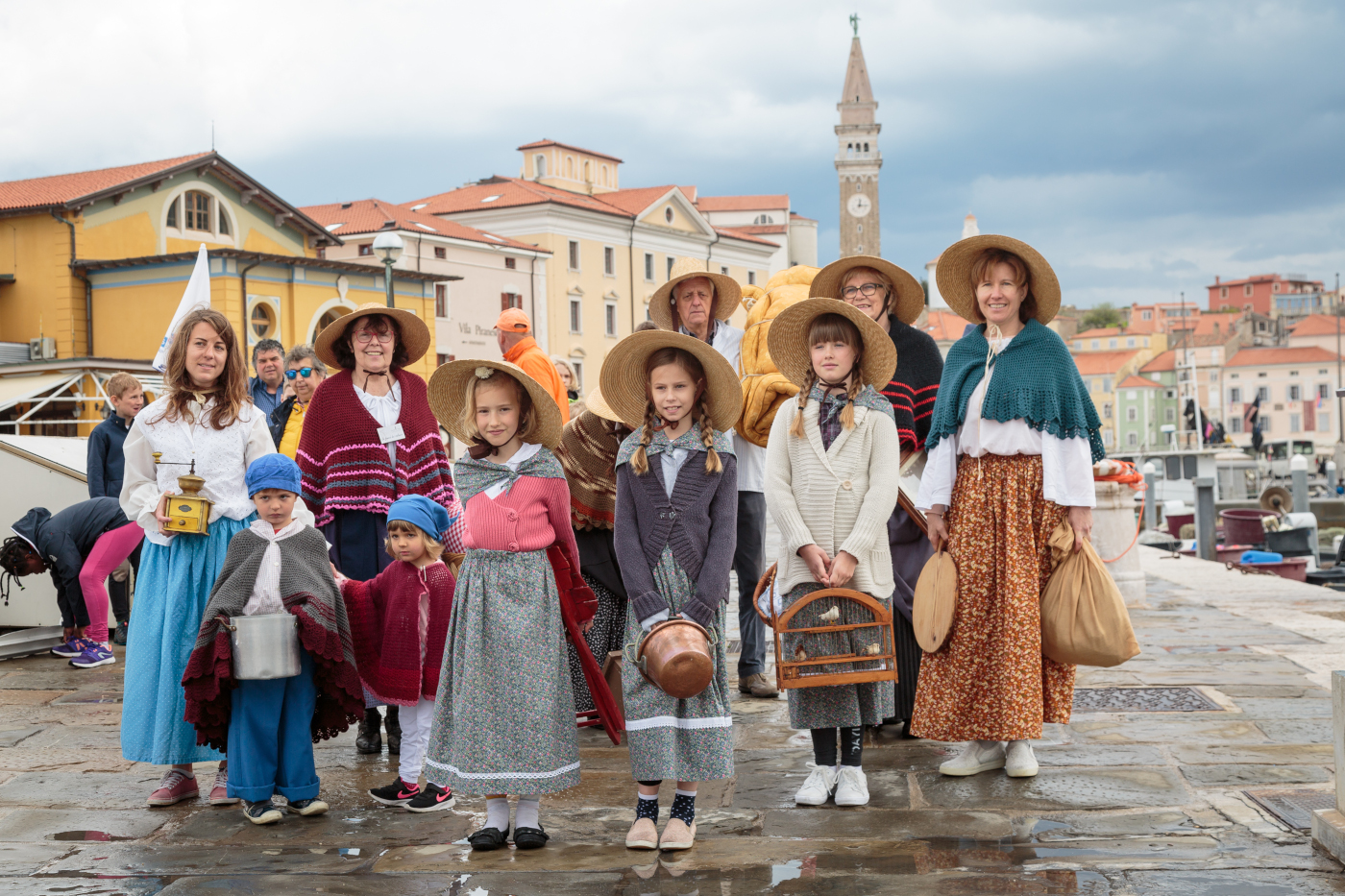Un anno difficile per tutti

Nada Dellore: L’arte dovrebbe infondere ai bambini un senso di serenità
12/30/2021
La tombola era la regina dei giochi da tavolo
01/19/2022
La comunità italiana di Pirano è sempre stata un soggetto molto attivo nella vita culturale del comune. I suoi gruppi artistico-culturali sono stati ospitati anche fuori dai confini comunali e persino all’estero, presentando il ricco patrimonio culturale locale. L’atmosfera in Casa Tartini è sempre stata molto vivace e teatro di molteplici attività e avvenimenti. Mentre in alcune stanze certi ballavano, cucivano, disegnavano o suonavano la chitarra, in altre si cantava, lavorava a maglia, faceva le prove per un nuovo spettacolo teatrale o creava bellissimi oggetti in ceramica e così via. Fino a quel famigerato marzo, quando tutti i gruppi furono costretti a prendere una pausa forzata dalle proprie attività.
Una delle più belle case di Pirano e dintorni ha preso nuovamente vita appena nell’autunno del 2021, quando i gruppi hanno ripreso le attività che, però, nonostante la grande dose di entusiasmo non sono proseguite senza intoppi. Abbiamo interpellato i mentori dei vari gruppi che generosamente dedicano il proprio tempo libero a trasmettere le loro conoscenze e competenze agli altri per capire come l’epidemia e tutte le varianti del nuovo virus hanno influenzato il loro operato, nonché scoprire quali momenti sono rimasti loro più impressi nella mente.
Una delle mentori che con estrema dedizione svolge il proprio lavoro è indubbiamente Giorgina Rebol, senza la quale il ricco patrimonio delle saline del Piranese sarebbe molto meno noto al pubblico. Giorgina e gli altri membri de “La famea dei salineri” sono sempre pronti a partecipare alle varie iniziative ogni volta che c’è bisogno di presentare alle persone la tradizione legata alle saline. Durante l’epidemia, però, non hanno potuto svolgere la loro missione, poiché molti eventi sono stati cancellati. Giorgina ha ricordato con amarezza le feste tradizionali come quella dei salinai, dei cachi e dei carciofi, ma anche gli incontri a scuola, negli asili e nelle biblioteche.
“Per non allontanarci e mantenere i rapporti ci davamo appuntamento e prendevamo un caffè, scambiando quattro chiacchiere. Così siamo rimasti sempre in contatto, in attesa di tempi migliori”, ha dichiarato.
L’attesa è finita in estate con il progetto “La cucina delle saline”. Inoltre, in autunno, in occasione delle Giornate Europee del patrimonio 2021, è stata promossa l’iniziativa “Buon appetito”. Giorgina ha voluto ricordato anche la loro esperienza televisiva, infatti, “La famea dei salineri” ha avuto uno dei ruoli principali nel ciclo di trasmissioni “La cucina dei nostri nonni”, realizzate dal centro regionale RTV Koper-Capodistria.
“La cosa più bella è stato incontrarsi con soci e simpatizzanti nelle nostre saline. Abbiamo presentato la nostra cucina, ritornando ai tempi quando le saline erano gremite di bravi salinai e le loro famiglie”, ha sottolineato Giorgina Rebol.
Anche il gruppo in costume “Al tempo di Tartini” non è sfuggito alle grinfie del nuovo virus. Come ha spiegato Daniela Ipsa, conosciuta anche come Mamma Tartini, non è stato piacevole rimandare le riunioni settimanali del gruppo e disdire tutte le partecipazioni agli eventi già in programma, “sperando che giunga quel cambiamento quando si potrà finalmente realizzare i progetti che si aveva in mente”.
Prima della chiusura nel marzo 2020, il gruppo, che mira a preservare il patrimonio del 18. secolo, il tempo in cui visse il celebre Giuseppe Tartini, ha partecipato a tutti gli eventi culturali tradizionalmente organizzati dalla comunità italiana. Sono stati presenti alla presa del potere cittadino all’inizio di Carnevale e al Gran Ballo organizzato in quell’occasione, con la loro presenza hanno reso ancor più unico il concerto che si è tenuto in Villa Tartini a Strugnano, e hanno pure partecipato a programmi televisivi e presentazioni video.
Come Giorgina, anche Daniela ha sottolineato l’importanza della socializzazione, dell’incontro, del contatto. Quello che probabilmente a tutti noi manca di più.
“Ritrovarci dal vivo, scambiare idee e opinioni, stare in compagnia… Tutte le nostre esperienze sono state uniche e originali. Ma se proprio dovrei dare una preferenza, va alla diretta televisiva della trasmissione ‘Dobro jutro’, dove erano presenti tutti i gruppi della nostra comunità. Subito dopo si piazza la registrazione del filmato girato a Palazzo Pretorio in cui abbiamo fatto da attori e figuranti e attraverso il quale abbiamo avuto l’opportunità di farci conoscere a visitatori e turisti”, ha ancora osservato la signora Tartini.
Traduzione: Kris Dassena
Foto: Nataša Fajon






